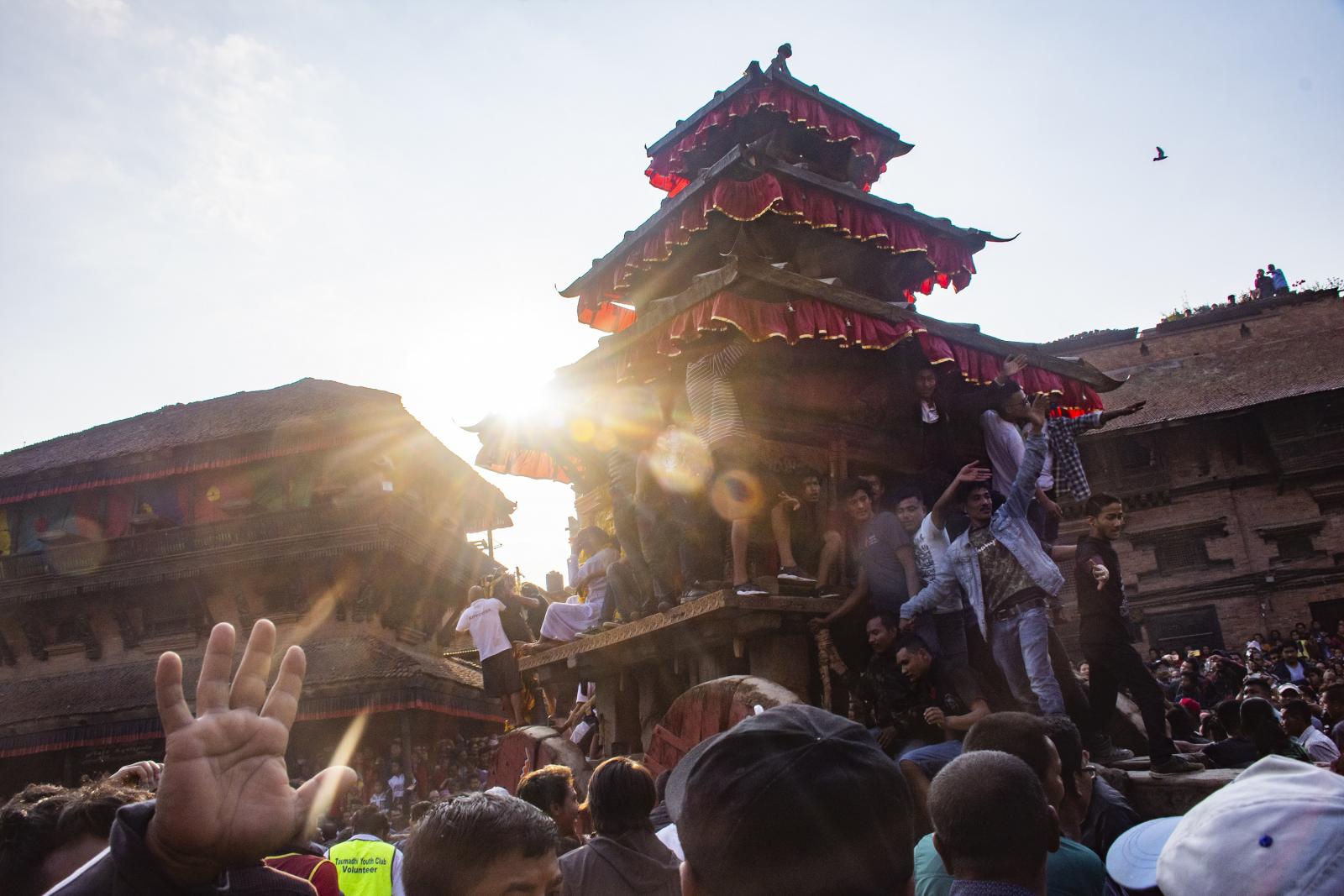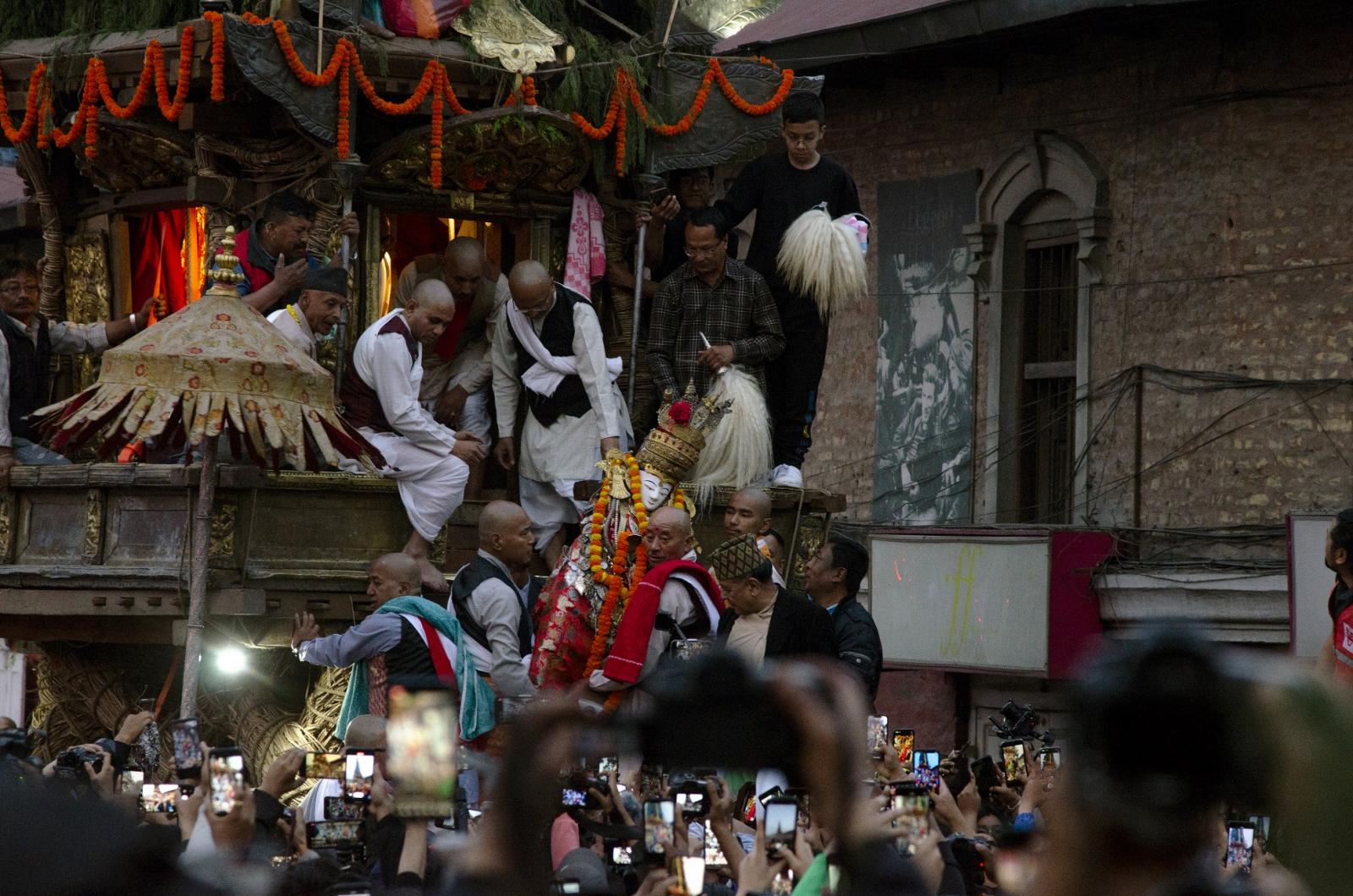The Three Legendary Chariots of Nepal
Witness three of the most energetic and mesmerizing jatra’s from Nepal that carries many stories and beliefs along with it.
Biska Jatra: Echoes of Cultural Majesty
A gripping celebration held yearly in the Bhaktapur area, this spectacular festival which spans nine days and eight nights from the last week of Chaitra to the first week of Baishakh in the respected Bikram Sambat Calendar surpasses simple celebrations and captures the very best of cultural beauty. The fierce powers of Thane (upper) and Kone (lower) fight in a spellbinding tug-of-war during Bhaktapur Tamadhi, which is a significant high point. One group from the east and one from the west work tirelessly to determine the chariot's course. If the former party wins, the chariot is taken to Golmadhi; while in the opposite case, the chariot is taken to Naasamanaa or Tekhapukhu. The Bhaila Kha, carrying the holy incarnation of Bhairav, finds sanctuary at Ga:hiti during this holy day, being scrupulously guarded by the revered priests of Guthis. The intricate tapestry of the festival weaves together an intriguing and important cultural fabric, enhancing the spirits of those who take part in its beauty.

Capturing the Vibrant Celebrations of Rato Machindranath
As the monsoon clouds gather, devotees invoke the powerful and fearsome Rato Machindranath to bring rain and fertility to the land in a vibrant display of color and culture. This festival is one of the greatest religious events in the city and is the longest chariot festival celebrated in Nepal the chariot procession route begins at Pulchok and passes through Gabahal, Mangal Bazar, Hakha, Sundhara, Chakrabahil, Lagankhel, and ends at Jawalakhel. Following a time-honored tradition, the chariot is exclusively pulled by women between the localities of Iti and Thati, in a segment of the procession known as Yākah Misāyā Bhujyā.

The Festive Charm of Seto Machindranath
Lord Seto Machhindranath, also known as Arya Avalokiteshwor or Janabaha Dyo, is one of the four Karunamaya spread across the four directions of the Kathmandu Valley. During the Nepalese month of Chaitra sukla astami, a fantastic float parade takes place on the streets of Kathmandu city. The chariot is adorned with flowers, particularly Juniperus chinensis, and various ornaments including Chandra, Surya, and pataa, all made of metal, with the chariot's four huge wheels each referencing different Bhairav symbols. The chariot has 10 storeys, each said to be the house of Lords Indra, Baruna, Kubera, Agni, Nairithya, Bayubya, Bramha, Mahadev and Narayan and is drawn by many devotees.



